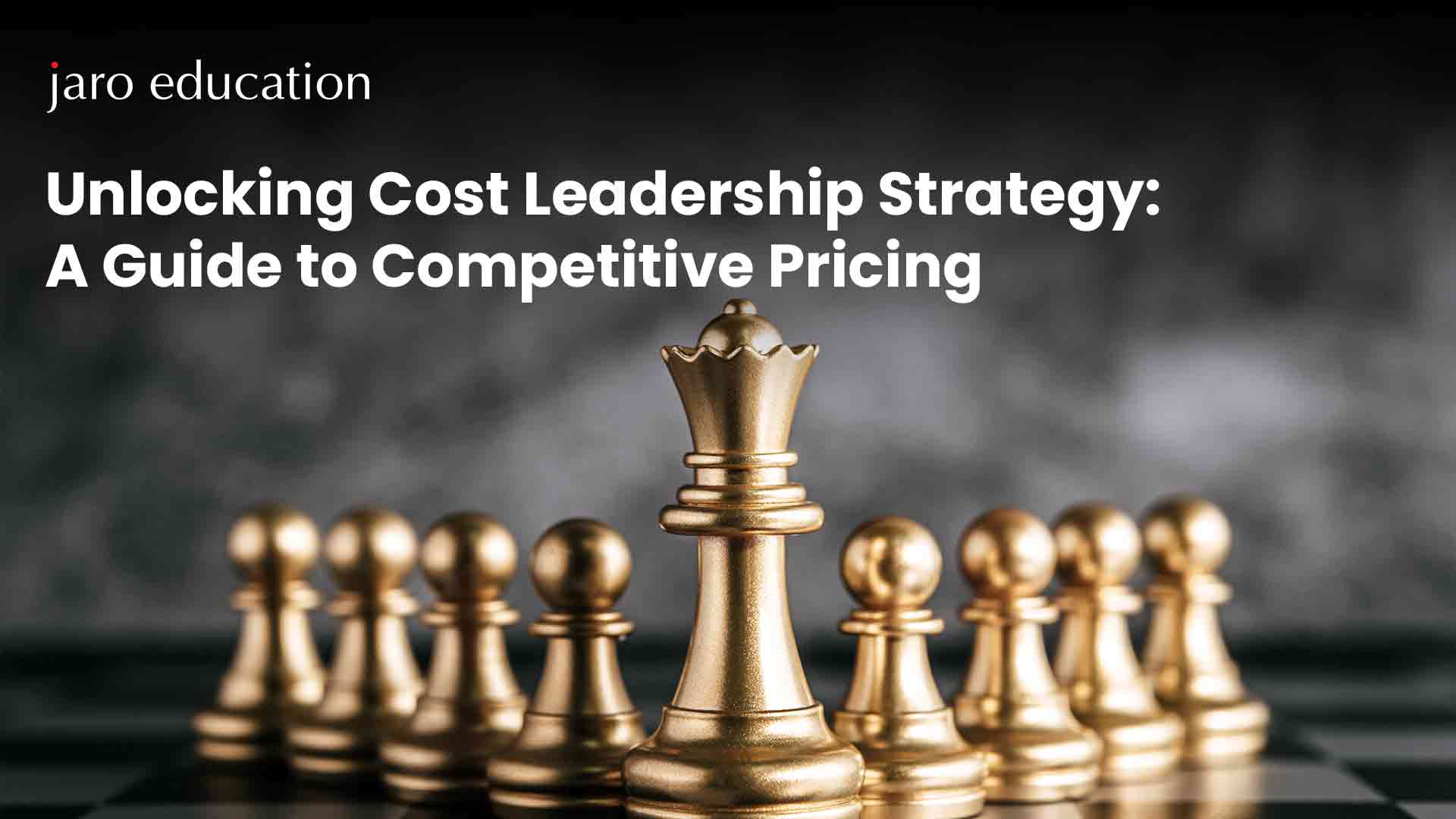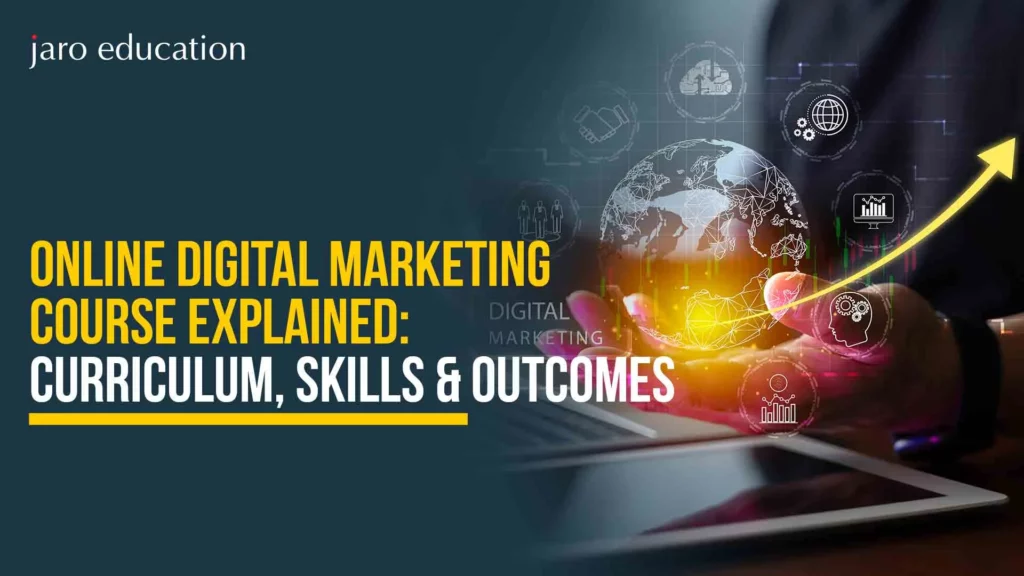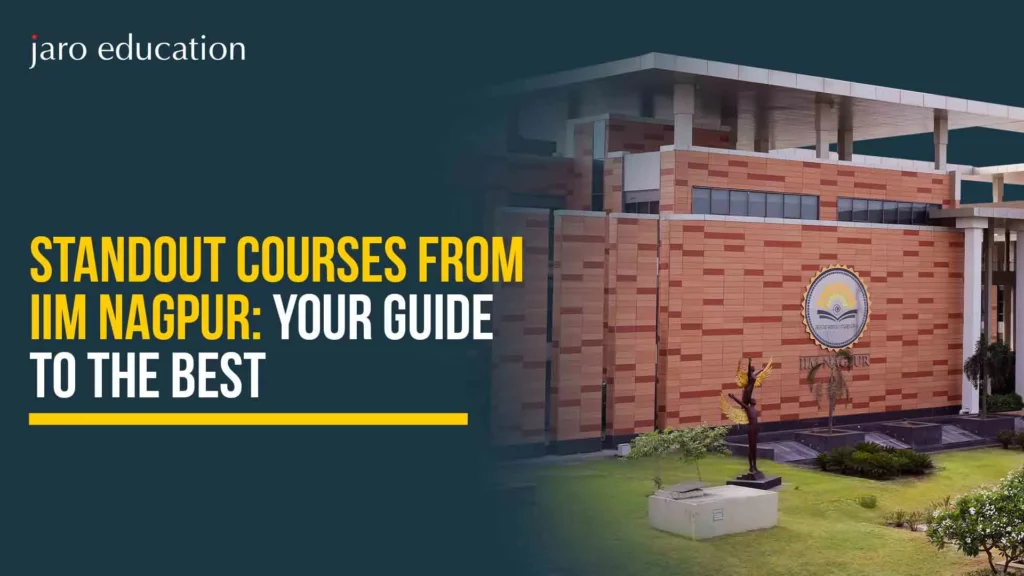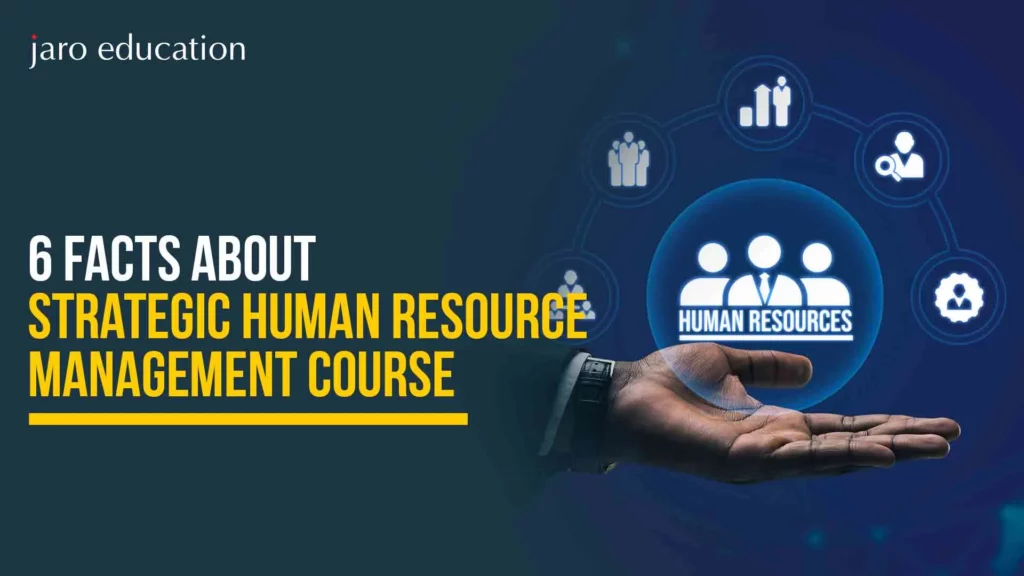Unlocking Cost Leadership Strategy: A Guide to Competitive Pricing
Table of Contents

- jaro education
- 6, August 2024
- 9:00 am
Introduction
In this relentless business environment, one needs to be at par with strategic management; one such strategy stands out: the cost leadership strategy. Known for its exceptional potential to catapult companies to market leadership with price competitiveness, comes the question: what a cost leadership strategy is. Through this blog, the essence, benefits, and real-world applications—tailored for professionals looking to enhance strategic acumen through programmes from institutes like IIM Ahmedabad—are derived.
What is a Cost Leadership Strategy?
A cost leadership strategy is one adopted by a business intending to become a low-cost producer in its respective industry. The business will be able to sell products at lower prices in comparison to those promulgated by the competition by lowering the costs of production and other associated costs. The approach embroils efficiency, cost control systems, and economies of scale geared at attaining and maintaining the lowest cost position in the market.
Here, the basic principle of cost leadership is easy to understand: if you are able to formulate your goods and services inexpensively as compared to your competitors, then you can undercut the price or enjoy higher margins by charging an average price. This technique works perfectly in an industry where all competition is on the basis of price and when buyers are price-sensitive.

Importance of Cost Leadership Strategy
Some major advantages of cost leadership that can be gained by a business are as follows:
- Higher Market Share: Higher market share can be captured due to lower prices by attracting price-sensitive customers.
- Higher Profit Margins: Even if the company charges average market prices for its products, the reduced costs of selling translate to a higher profit margin.
- Survivability during Price Wars: In such a situation, the firms that hold a low-cost position would be better equipped to survive price wars because they can now reduce prices and survive longer than their competitors.
- Entry Barriers: The competitive threats may be lowered as new entrants in the market could face challenges to compete on price with such entrenched low-cost leaders.
- Bargaining Power: Lowered costs in the hands of a company raise its bargaining power with both suppliers and buyers, further cementing its competitive advantage.
Key Components of Cost Leadership Strategy
The following are major elements of a business for which it has to strive in order to establish a cost leadership strategy:
- Efficient Production Processes: This kind of process allows a firm to reduce the level of waste and favorably increase the levels of output or products.
- Economies of Scale: This refers to increased production levels since fixed costs will be spread over a greater number of units, hence reducing the cost per unit.
- Technology and Automation: This helps in enhancing efficiency at the same time as cutting labor costs.
- Cost Control and Reduction: Trim unnecessary expenses in all functional areas regularly.
- Supply Chain Management: Optimize supply chain management so that raw materials are procured at the best prices and on time.
Examples of Cost Leadership Strategy
A cost leadership strategy is helpful for some companies to acquire the leader position in the industry. The following are some examples of cost leadership strategies in real life :
The Walmart Case
Walmart presents a classic case of what is cost leadership strategy. It is capable of supporting low prices through large-scale, efficient supply chain management, and an ever-continuing program for cost reduction to attract a wide customer base.
Southwest Airlines
Southwest Airlines has put in place a cost leadership strategy by focusing on a single type of aircraft, the Boeing 737, which keeps down the cost of maintenance and training. Moreover, as a result of their point-to-point route model and robust operations, which have helped them retain the capability of charging low fares yet remaining very profitable, the airline has been able to remain very competitive.
McDonalds’ Study
Under McDonald’s cost leadership, it creates a cost advantage through the standardization of its production processes and bulk purchasing. Effective supply chain management helps it make sure that most of the items on its menu can be afforded by anybody.
Application of Cost Leadership Strategy in Organization
This strategy needs a value-driven, thoughtful, and careful approach while implementing it. The following steps will help your organization effectively implement this strategy:
- Do a Cost Analysis: Identify each cost driver in your company and see how you can save costs in some areas.
- Invest in Technology: Automate all processes using technology, cut down on labor costs, and increase efficiency.
- Streamline your Supply Chain: Develop good relationships with your suppliers, negotiate better terms, and fine-tune the supply chain flow to bring down procurement costs.
- Bring in Production Efficiency: Introduce lean principles of manufacturing techniques to highlight waste and improve productivity.
- Focus on Economies of Scale: Increase production volumes to lower the per-unit cost and be competitively advantageous.
- Training and Development: Train people to develop skill sets in them so that the operations can be more efficient.
Challenges
As much as the cost leadership strategy has many benefits, various challenges come along with it, and these include:
- Maintaining Quality: Over-emphasis on cost reduction more often than not affects product quality, hence dissatisfaction among customers.
- Innovation Stagnation: Firms may become too complacent with their low-cost position and hence become negligent towards innovation. More innovative competitors could then take advantage of this situation.
- Price Wars: Price wars are expensive and cannot be maintained over a considerably long period. A firm that initiates such practices will come off losing as its profit margins will significantly come down.
- Economic Changes: Economic changes may affect the implementation of cost leadership. An increase in raw material prices or labor costs, for example, may heighten the production cost beyond the competitive advantage.
Balancing Cost Leadership with Other Strategies
Therefore, a balanced approach is vital in the long run. Following are some of the methods to achieve a balanced cost leadership strategy with other competitive strategies:
- Differentiation: Mix cost leadership with differentiation, so that unique features or superior quality products can be offered at a good competitive price.
- Focus Strategy: Focus on one particular market segment and adjust your cost leadership strategy accordingly for that segment.
- Innovation: The Company should continuously invest in research and development to come up with product and process innovation that will sustain a competitive advantage.

Role of Strategic Management Programs
For professionals to be masters at cost leadership strategies, Programme for Strategic Management by IIM Ahmedabad, would benefit greatly. In such programs, an individual acquires deep theoretical knowledge and practical skills concerning the implementation of cost leadership strategies and their sustainability. Participants learn from industry experts, engage themselves in real-world case studies, and develop the art of strategic thinking—both highly important to sail through today’s business environment complexities.
Conclusion
An understood and implemented cost leadership strategy raises considerably the competitive advantage of the firm in the market. Focusing on efficiency, cost control, and economies of scale empowers companies to bring down their costs and offer competitive pricing. This enables them to attract more customers, thus increasing the market share of a business. But cost leadership has to be offset against other strategic directions; innovation must be ceaseless. There are some strategic management courses, like the one by IIM Ahmedabad, that really help people interested in learning such techniques with knowledge and expertise to execute bills of business growth and success.







![Career-Options-in-Economics-Top-9-Career-Opportunities-in-India-[2024]](https://jaro-website.s3.ap-south-1.amazonaws.com/2024/05/Career-Options-in-Economics-Top-9-Career-Opportunities-in-India-2024.jpg)



